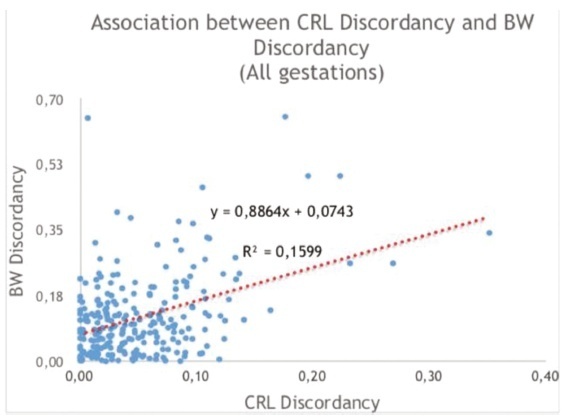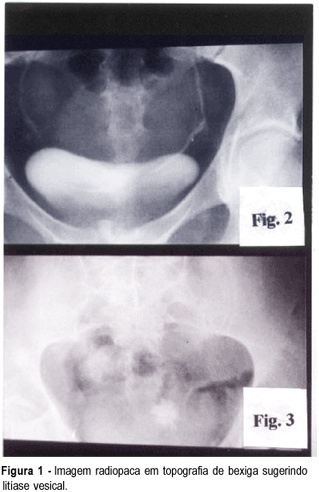Summary
Revista Brasileira de Ginecologia e Obstetrícia. 2009;31(11):529-533
DOI 10.1590/S0100-72032009001100001
Rapidly growing mycobacteria (RGM) are opportunistic microorganisms and widely distributed into aqueous environment and soil. Human RGM infections are usually associated with contaminated solutions or medical instruments used during invasive procedures. RGM postsurgical infections have recently emerged in Brazil and have caused national alert, considering the risk factors and epidemiological aspects. This study aimed at analysing the main factors linked to the recent RGM outbreaks, with focus on the national epidemic of Mycobacterium massiliense infections related to the BRA100 strains resistant to 2% glutaraldehyde commercial solutions commonly used for preoperative high-level disinfection. Based on previous studies and laboratorial results of assays and colaborations, it has been observed that the cases have been associated with videolaparoscopy for different applications and elective esthetic procedures, such as lipoaspiration and mammary prosthesis implant. Furthermore, outbreaks between 2004 and 2008 and the epidemic in Rio de Janeiro state may be considered particular Brazilian events. Although there are a few epidemiological published studies, some hypotheses based on common aspects related to most national nosocomial occurrences are possible, such as lack of protocols for cleaning and high-level disinfection, use of 2% glutaraldehyde as high-level disinfectant for surgical instruments, and dissemination of M. massiliense BRA100 by unknown mechanisms.
Summary
Revista Brasileira de Ginecologia e Obstetrícia. 2020;42(9):529-534
The purpose of the present study was to analyze the influence of chorionicity in the biometric parameters crown-rump length (CRL), birthweight (BW), crown-rump length discordancy (CRLD) and birthweight discordancy (BWD), determine the correlation between these latter two in cases of intertwin discordancy, and to analyze the influence of chronicity in the presence of these discordancies with clinical relevance (> 10% and > 15%, respectively).
The present study was a retrospective study based on the twin pregnancy database of the Centro Hospitalar S. João (2010-2015), including 486 fetuses among 66 monochorionic (MC) and 177 dichorionic gestations (DC). The inclusion criteria were multiple pregnancies with 2 fetuses and healthy twin gestations. The exclusion criteria were trichorionic gestations and pregnancies with inconclusive chorionicity, multiple pregnancy with ≥ 3 fetuses and pathological twin gestations.
No statistically significant difference was found in BW (p = 0.09) and in its discordancy (p = 0.06) nor in CRL (p = 0.48) and its discordancy (p = 0.74) between MCs and DCs. Crown-rump length discordancy and birthweight discordancy were correlated by the regression line “BWD = 0.8864 x CRLD + 0.0743,” with r2 = 0.1599. Crown-rump length discordancy > 10% was found in 7.58% of monochorionic and in 13.56% of dichorionic twins. Birthweight discordancy > 15% was detected in 16.67% of monochorionic and in 31.64% of dichorionic twins.
No statistically significant influence of chorionicity was identified in both birthweight and birthweight discordancy, as in crown-rump length and crown-rump length discordancy. Birthweight discordancy was correlated to crown-rump length discordancy in 20% of cases.

Summary
Revista Brasileira de Ginecologia e Obstetrícia. 2014;36(11):529-529
Summary
Revista Brasileira de Ginecologia e Obstetrícia. 2016;38(11):529-530
Summary
Revista Brasileira de Ginecologia e Obstetrícia. 2005;27(9):529-533
DOI 10.1590/S0100-72032005000900005
PURPOSE: to study the histological modifications that occur in the endometrium of women before and six months after tubal ligation (TL) and to correlate these findings with progesterone (P4) levels. METHODS: the study was conducted on 16 women with normal menstrual cycles who were evaluated before and in the sixth cycle after TL. P4 levels were determined from the 8th day at 2-day intervals until ovulation and on the 8th, 10th and 12th day after ovulation or on the 24th day of the cycle. An endometrial biopsy was obtained between the 10th and 12th day after ovulation or on the 24th day of the cycle and a correlation with P4 was determined. Data were analyzed statistically by the nonparametric McNemar test for the evaluation of hormonal determination and by the exact Fisher test for the histological evaluation of the endometrium, with the level of significance set at p<0.05. RESULTS: mean age was 34.1±1.3 years. The intermenstrual interval was 27.1±2.6 days and the duration of bleeding was 3 to 5 days, with no difference between the studied periods. Before TL, 8/16 (50.0%) of the cases had a secretory endometrium according to the cycle, 3/16 (18.8%) had a secretory endometrium not according to the cycle and 3/16 (18.8%) had a dysfunctional endometrium, suggesting a defect in the luteal phase in 6/16 (37.5%). After TL, 7/16 (43.8%) had a secretory endometrium according to the cycle, 3/16 (18.8%) a secretory endometrium not according to the cycle and 4/16 (25.0%) had a dysfunctional endometrium, suggesting a defect in the luteal phase in 7/16 (43.8%). In 2/16 (12.5%) of the cases before TL and in 2/16 (12.5%) other cases after TL it was not possible to perform histological evaluation due to insufficient material or unspecfiic endometritis. In the luteal phase after TL, mean P4 levels were significantly lower on days +8, +10 and +12 than before TL, being 15.1, 18.0 and 20.7 ng/ml, respectively, before TL and 10.6, 8.0 and 5.4 ng/ml after TL (p<0.05). Before TL, 5/8 (62.5%) of the cases with a secretory endometrium according to the cycle had P4 >10 ng/ml and 3/8 (37.5%) had P4 <10 ng/ml. After TL, when the endometrium was secretory according to the cycle, P4 was >10 ng/ml in 4/7 (57.1%) and <10 ng/ml in 3/7 (42.9%). These differences were nonsignificant (p>0.05). CONCLUSION: six months after TL, the intermenstrual interval and the duration of bleeding were unchanged. P4 levels decreased during the luteal phase although this did not interfere in the endometrial response.
Summary
Revista Brasileira de Ginecologia e Obstetrícia. 2003;25(7):529-532
DOI 10.1590/S0100-72032003000700011
The fistulas caused by mechanical trauma are rare, mainly the intrinsic type caused by vesical lithiasis. The treatment of these fistulas is controversial, concerning the ideal surgical technique. Several techniques have been developed, including the transvaginal and the transabdominal surgical approaches. The authors report the case of a patient with urinary loss for six months. Physical and radiological examination showed the occurrence of a vesicovaginal fistula caused by vesical lithiasis. The treatment was in two stages: first the extraction of the vesical stone by transabdominal approach and second, the correction of the fistula by transvaginal approach.

Summary
Revista Brasileira de Ginecologia e Obstetrícia. 2000;22(8):529-529
DOI 10.1590/S0100-72032000000800010
Summary
Revista Brasileira de Ginecologia e Obstetrícia. 2000;22(8):529-529
DOI 10.1590/S0100-72032000000800011